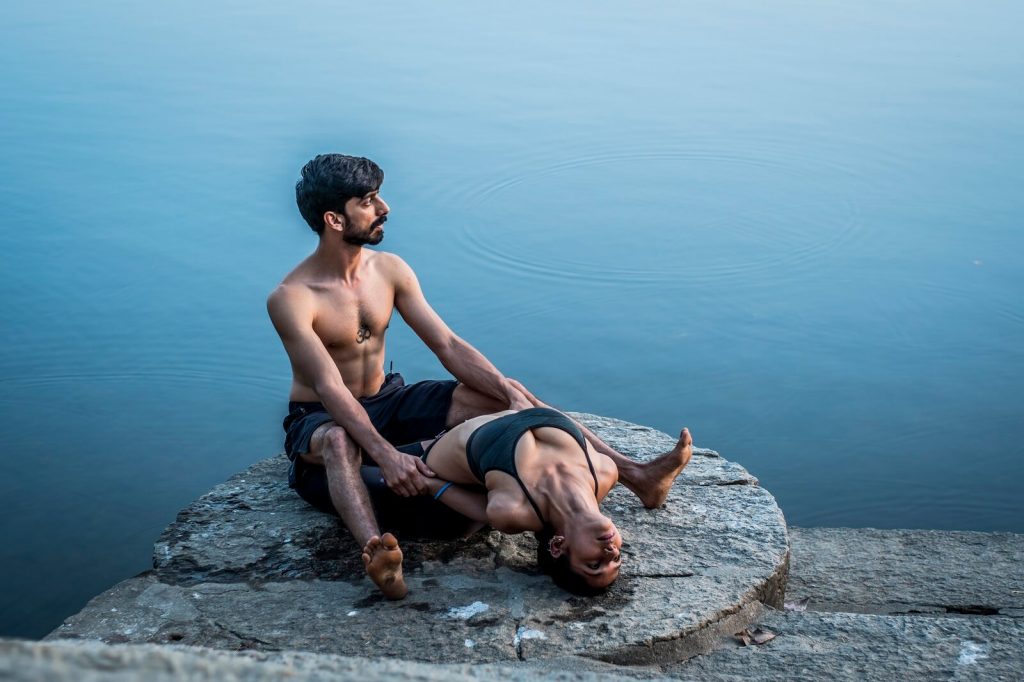Meet Myra Khanna and Pratik Rajani, two young yogis on a journey of learning, exploration and teaching. Myra is a trained Kathak dancer and scuba diving instructor, who decided to pursue Yoga full-time in 2018. Pratik is a yoga practitioner who started learning in 2016 at the Yoga Institute, Mumbai. They met in Mysore at Bharat sir’s shaala and forged a connection. Together they teach Hatha Yoga and Ashtanga Yoga to a loyal student base in Mumbai. For this special edition, they decode the essence of well-being.
As a businessman, an artist, a medical professional, a student going to school or a retired official – across this vast spectrum of skill sets, age groups and professions a common thread ties us all – a desire to wake up and go about each of our days, chores and activities without being interrupted by an unpredictable headache, fatigue that comes crashing down upon us with no prior warning, lower back pain from sitting for extended periods of time or slightly subtler – thoughts of doubt and uncertainty, sending us into a spiral of worry. Unfortunately as the years pass the above mentioned obstacles somehow have merged into normalcy, our threshold for tolerance towards mental and physical pain is increasing – are we becoming stronger or are we simply learning to deal with it?
As humans, when we are in control of our state of being, when we are in a happy condition, progressing at a comfortable pace we call that state – Su-sthiti or Su-gati (su-good/happy or auspicious; Sthithi + Gati – state or space). Within the practice of yoga, asana plays a role in paving the way toward wellness. The human mind finds comfort in proof, logic and tangible results – which is why at a beginner’s stage asana practice as a step, works on the physical body, changes that can be measured.
Through asana practice we learn to elongate and contract the muscular system, lubricate the skeletal system through increased mobility and expand cavities of the body through a stronger breath – this constant movement, if done responsibly is like a massage to our internal organs, a gush of oxygenated blood to every corner of the body, accelerating healing and promoting wellness that is visible.

And Pratik Rajani is doing Kukutasana
Yoga does not stop at the limbs and joints, in fact it barely begins – there are additionally a plethora of practices (cleansing techniques known as Kriyas) that can be adopted even if one does not want to/cannot practice asana. If these methods are adopted regularly there is enough to practice even for somebody who may not want to or be able to do asanas.
For example, simple eye exercises (trataka – candle gazing being slightly more advanced) strengthen the optic nerve but also penetrate deeper and send healthy blood to the sinus cavities and eventually lead to clarity and composure in the mind.
Mukha Dhoti, Agni Sara and Nauli work directly with the digestive system, respiratory system and allergies – the top culprits that disrupt our idea of well-being.
Traditionally, the practice of Kriyas precede asana practice. Think of our body as a vessel that must be cleaned in order to fill it with water without the water getting contaminated. Kriyas clean our body so that we can take in breath and rid ourselves of toxins and ailments. Imagine a routine where one can integrate one or more of these practices that touch upon our physical body on the surface, our sensory organs and our deep seated endocrine glands – and the approach we have towards this practice, the manner in which we apply it’s tantras (teachings) is entirely within our hands and our reach.
An approach which is well balanced, not shaded with a coat of aggression or potential disappointment upon failure is an approach of Sattva. When one is Sattvic the body and the mind expand invariably and open up to all new possibilities and potentials. This enthusiasm with a pure hearted intention is what wellness means to us, is what we search for through our practice of yoga.
Written By
Myra Khanna & Pratik Rajani
Instagram: @amwithpm





